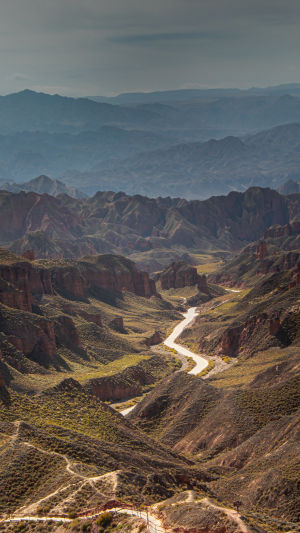Taklamakan, which means "in and out" in Uyghur, is a desert that has been used since ancient times to shorten the distance between north and south.
Crossing the desert can shorten the distance between north and south, and there have been people who did not believe this since ancient times.
In 1895, Sven Hedin, a Swede and world-renowned explorer, made his first foray into the Taklamakan Desert with great ambition. But due to inexperience his expedition was almost completely wiped out, leaving him alone to crawl woefully into the dry channel of the Hetian River, where a spring saved his life. As a result, he gave the Taklamakan its nickname of the Sea of Death.
How difficult would it be to build a road on such a mobile sea of death, but why build a desert road?
The desert road was originally built to exploit the oil resources of the Tarim Basin. In the 1970s and 1980s, huge reserves of oil were discovered in the Tarim Basin in Xinjiang.
The oil fields were located in the desert and transportation was an insurmountable problem. In order to better explore, develop and transport the oil and gas resources in the desert, it was imperative that desert roads were built.
The first desert road was called the Tarim Desert Oil Highway, and construction began in 1993, with the participation of nearly 20 research institutes and nearly 200 experts and technicians working tirelessly to overcome the challenges faced. With the concerted efforts of all those involved, it took two and a half years for the Tarim Desert Highway to be completed.
For visitors eager to cross the Tarim Desert, the Tarim Desert Highway undoubtedly offers the best conditions. Traversing the entire desert by car will take around five hours, with exotic desert landscapes and thousand-year-old poplars to be seen along the way.
The average annual rainfall in the Taklamakan Desert is only 25 mm, while the average annual evaporation is 150 times higher. The desert road greening project started in 2003 and is 436 kilometres long and 72 to 78 metres wide.
The entire green belt is irrigated with drip irrigation technology, with a watering booster station set up every approximately 2 km and managed by a ranger throughout the year. The total annual water consumption does not exceed 6 million cubic metres and the total number of seedlings planted reaches more than 18 million, it is known as the world's first desert green corridor.
On the entire desert road, there are 108 water well houses, each of which is looked after by a couple.
Every day, they take care of the water protection station where they are located. At the same time, they walk the kilometres of the road under their jurisdiction, taking care of the fragile roadside vegetation and making sure that the drip irrigation lines are intact.
They also have to fight against the extreme conditions of high temperature difference, strong sunlight and heavy dryness, and battle against the moving sand and wind.
In the boundless desert, they endure the unbearable loneliness and repeat the boring work day after day, insisting on guarding this green channel.
Finally, the construction of desert roads has played a key role in the development of China's Xinjiang. We hope that visitors will come and have fun while protecting the environment and living up to the work of the irrigation maintenance staff!





